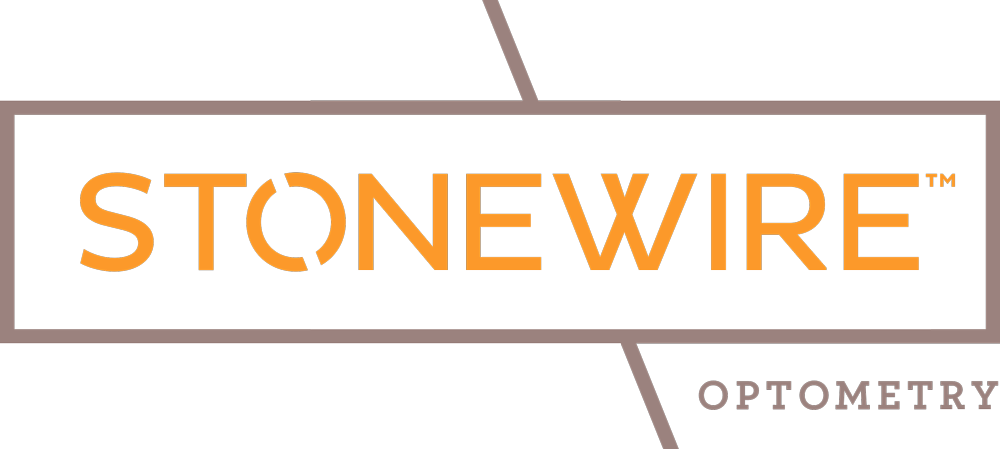Understanding Myopia in Kids: Causes, Risks, and Early Signs
/Childhood myopia (nearsightedness) is more than just blurry vision—it's a growing epidemic that could impact your child's future eye health. Did you know that by 2050, half of the world's population could be myopic?
While glasses or contact lenses can correct vision, high myopia can lead to serious eye conditions like retinal detachment, glaucoma, and cataracts later in life.
At Stonewire Optometry in Kingsway Mall, Edmonton, we're here to help you understand the causes, risks, and early signs of myopia in kids—and, most importantly, what you can do to protect your child's vision.
What is Myopia?
Myopia (nearsightedness) is a refractive error that causes distant objects to appear blurry while close-up objects remain clear. It occurs when the eyeball grows too long or the cornea is too curved, causing light to focus in front of the retina instead of directly on it.
While myopia can be corrected with glasses or contact lenses, high levels of myopia can increase the risk of serious eye conditions later in life, such as retinal detachment, glaucoma, and cataracts.
What Causes Myopia in Kids?
Several factors contribute to the development of myopia in children:
Genetics: If one or both parents are nearsighted, their child is more likely to develop myopia.
Screen Time: Prolonged use of digital devices, such as tablets, phones, and computers, can strain young eyes and contribute to myopia progression.
Lack of Outdoor Time: Studies show that spending time outdoors in natural light can help reduce the risk of myopia. Kids who spend more time indoors are at a higher risk.
Close-Up Activities: Excessive reading, writing, or other near-work activities without breaks can also play a role.
The Risks of High Myopia
While mild myopia can often be managed with corrective lenses, high myopia (severe nearsightedness) can lead to complications such as:
Glaucoma
Cataracts
Myopic Maculopathy
The higher the level of myopia, the higher the risk of these conditions later in life. That's why early detection and intervention are crucial.
Early Signs of Myopia in Kids
As a parent, you can watch for these signs that your child may be developing myopia:
Squinting to see distant objects
Sitting too close to the TV or holding books very close
Frequent eye rubbing or complaints of eye strain
Difficulty seeing the board at school
Declining academic performance (due to vision issues)
Problems playing sports
If you notice any of these signs, it's time to schedule an eye exam.
What Can You Do to Protect Your Child's Vision?
Schedule Regular Eye Exams: Comprehensive eye exams are the best way to detect myopia early and monitor its progression.
Encourage Outdoor Play: Aim for at least 1-2 hours of outdoor activity daily to help reduce the risk of myopia.
Limit Screen Time: Follow the 20-20-20 rule—every 20 minutes, take a 20-second break to look at something 20 feet away.
Explore Myopia Control Options: At Stonewire Optometry, we offer advanced myopia control treatments, such as specialized eyeglasses and contact lenses, and pharmaceutical options, like low-dose atropine eye drops, to slow myopia progression in kids.
Take Action Today: Protect Your Child's Vision
Don't wait until your child's vision problems affect their daily life or future eye health. At Stonewire Optometry in Kingsway Mall, Edmonton, we specialize in pediatric eye care and myopia control. Our friendly team of optometrists is here to provide personalized solutions to keep your child's eyes healthy and their vision clear.
Contact us today to learn more about myopia control options, or book your child's eye exam online to take the first step toward protecting their vision.
Your child's eyesight is priceless—let's work together to safeguard it for years to come.
Disclaimer: The content provided in this blog post by Stonewire Optometry eye care clinic in Edmonton’s Kingsway Mall, and is intended solely for informational purposes and does not replace professional medical advice, diagnosis, or treatment by a Licensed Optometrist. No doctor/patient relationship is established through the use of this blog. The information and resources presented are not meant to endorse or recommend any particular medical treatment or guarantee and outcome. Readers must consult with their own healthcare provider regarding their health concerns. Stonewire Optometry and its optometrists do not assume any liability for the information contained herein nor for any errors or omissions. Use of the blog's content is at the user's own risk, and users are encouraged to make informed decisions about their health care based on consultations with qualified professionals.





